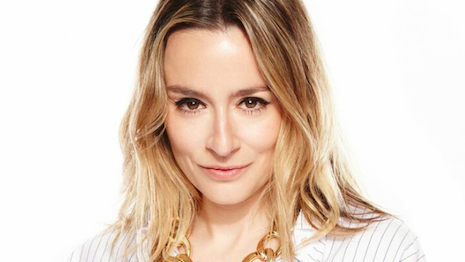 Ana Andjelic
Ana Andjelic
By Ana Andjelic
When it was founded nearly 30 years ago, White Cube offered the art world something new. It mixed populism and privilege, establishment and avant-garde, approachability and chic, transparency and entrepreneurship.
One can argue that this is the definition of Internet culture, which was brewing at about the same time.
Fast forward to 2019, and the feeling is that White Cube has been left behind. An open and transparent market for art may had once been a killer proposition. Today, it is reality.
Art whirl
Art is a reflection of the times we live in, and the idea of white box as an art format is very 20th century. The format of 21st century art is the feed.
Visual culture today – from design to architecture to fashion to food to art – is largely shaped by Instagram.
More than 50 percent of art collectors on Instagram purchased work from artists they originally discovered through Instagram.
More than 50 percent of art consumers first bought art online without seeing the physical piece. Add to this the fact that today’s collectors invest in streetwear and sneakers as much as in traditional art, and we have a completely new economics of taste.
In this new socio-economic market, taste is not owned-and-operated by few. The rise of Instagram influencers in the art world expand the notion of who has taste – and what good taste is – beyond galleries, curators and “white cubes.”
Framing it
Today, one can argue that luxury fashion stores behave, and are perceived, like art galleries. Often, they are.
For example, Victoria Beckham features Old Masters from Sotheby’s in her Mayfair store. Simone Rocha’s new Hong Kong store contains honeycomb from bee nests that function as sculptures, by Chinese artist Ren Ri and a trio of lithographic prints of Francis Bacon’s Tripthych August 1972.
Danish fashion brand Ganni’s London store is dotted with a selection of paintings and illustrations, and British brand Self-Portrait opened its first New York store with light installations.
It has become increasingly hard to know what the store visitors are there for – to shop, admire art, or both. The feed flattens and merges different cultural spheres, and fashion and art co-exist as “experience.”
The biggest question here is how the more traditional art presentation formats can evolve and thrive in the culture that moves at the speed of the social feed.
Art galleries have always been obsessed with working with the artists who have the biggest traction.
The challenge today is to ensure that something has value 50 years from now, at the time when cultural newness is obsession.
The main challenge is not anymore “making things for people who haven’t been born yet,” as Damien Hearst – whose own mass-produced art has lost its power to shock – put it.
The main challenge is to ensure for the next generation of collectors discover the art and artists you are putting forward.
IT IS NOT up to galleries to make sure that the most relevant voices of our age are heard and celebrated.
It is up to curators with the lowercase c, who reside everywhere: in galleries, art fairs and on their own Instagram feeds.
Ana Andjelic is a New York-based brand growth leader, doctor of sociology and startup advisor. She was named to Forbes CMO Next 2018 list. Reach her at andjelicaaa@gmail.com.
